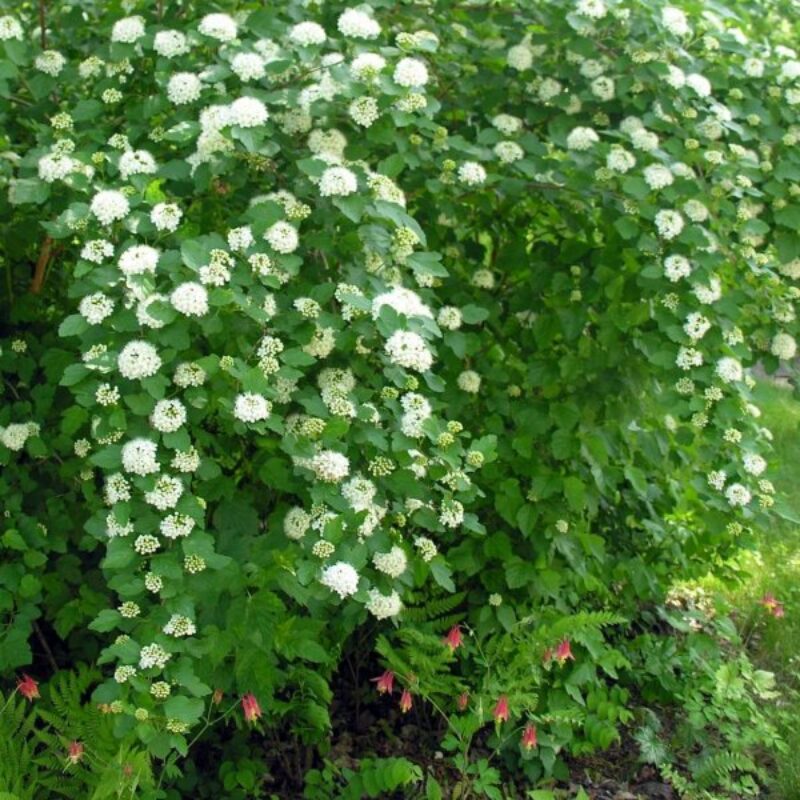NinebarkPhysocarpus opulifolius
Many varieties, tolerates a variety of soils, showy flowers. Mound-forming shrub with closely spaced stems that grows 8-10' tall. A popular foundation shrub because it is tough and easy to maintain. It is also a good shrub for restorations along streams, lakes, swamps, calcareous conditions and areas along Lake Superior.
USDA symbol: PHOP
General Information
| Plant Type | Shrub |
|---|---|
| Height | 5 to 8 feet |
| Light Exposure | Sun, Part Sun |
| Soil Moisture | Dry, Medium |
| Bloom Color | White |

Tolerances
| Flooding / Inundation Tolerance | Moderate |
|---|---|
| General Resilience | 10 |
| Salt Tolerance | None |
| Stress Tolerance | Drought Tolerant, Fire Tolerant, General Disturbance |
Pollinator Value: Very High
| Bloom Months | May to August |
|---|---|
| Larval Host of | Bees, Moths |
| Specific Pollinators Hosted | Andrena melanochroa, Eulithis molliculata, Habrosyne gloriosa |
| Pollinator Benefit | Insect Pollinated, Provides Nectar, Supports Generalists |
Project Planning
| Project Type | Rain Garden, Restoration, Sandy or Engineered Soils, Shoreline Buffer |
|---|---|
| Coefficient of Conservatism | 7 |
| Herbivore Sensitivity | High |
| Lifespan | Perennial |
| Rate of Spread | Slow |
| Soil Stabilization | Deep |
| Vegetative Reproduction | Clonal |
Range
| County | Carlton, Cook, Lake, St. Louis |
|---|---|
| Ecoregion | Driftless Area, Lake Agassiz Plain, North Central Hardwood Forests, Northern Glaciated Plains, Northern Lakes and Forests, Northern Minnesota Wetlands, Western Cornbelt Plains |
| Approximate Eco Province | Eastern Broadleaf Forest, Laurentian Mixed Forest, Prairie Parkland, Tallgrass Aspen Parklands |
